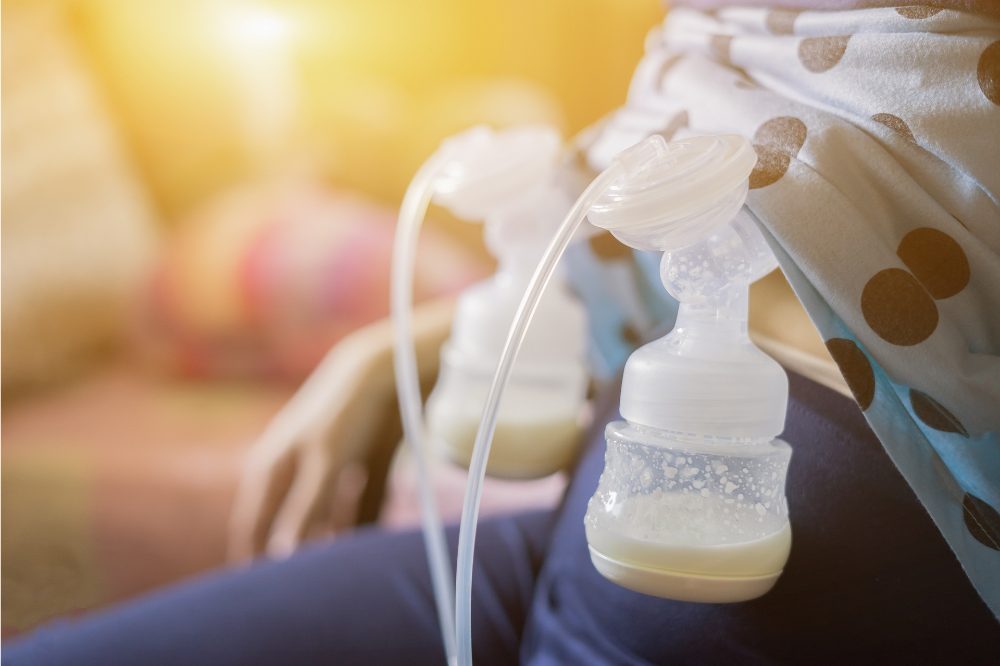If you’ve ever pumped breastmilk, you may find yourself asking a question that seems deceptively simple: Are my breasts empty?
It’s a common concern, especially among those who have just started pumping or breastfeeding, and there are several important reasons to determine the answer.
- Pumping breastmilk (and breastfeeding in general) is a matter of supply and demand. The more you pump and feed, the more milk your body will create. If you stop pumping before your breasts empty, you may make less milk.
- Emptying your breasts helps avoid engorgement, which is when your breasts become overly full of milk. Engorgement can be painful and can lead to other, more serious problems down the road.
- You want to get as much milk out of each session as possible, so you don’t want to stop pumping before your breasts are fully empty. And if your breasts aren’t fully empty after a pumping session, it might mean your pump settings aren’t right.
One tricky thing about breasts is that they’re never completely empty. But after a regular pumping or nursing session, they should feel different from when they’re full. Here’s how to tell if you’ve emptied them enough.
How to know if you’re breasts are empty
- Your breasts will feel lighter
When your breasts are empty, they will probably feel lighter and no longer uncomfortably full, as they might have at the start of the pumping session. You can also pick them up to see if they still feel heavy or full of milk. - You have spent at least 15 minutes pumping
Pumping sessions typically take about 15 to 20 minutes. So if you’ve been pumping for at least 15 minutes during each double-pumping session, your breasts are most likely empty, even if you don’t see a lot of milk in the container. A typical output for a pumping session is .5 to 2 ounces, but it’s important to remember that the quantity will vary for a lot of reasons, including the age of your baby and when you started pumping. Here’s a quick explainer about the many factors that go into what you will produce. - You will notice less coming out
If you have been pumping for 15 to 20 minutes, you should experience a change in the way the milk is flowing, from a spray to a dribble or drop. If that’s the case, your breasts are most likely empty. However, if your milk stops flowing consistently after a few minutes, you may need to change your breast pump settings to cause yourself to have a second “letdown” during your session. (More on this below).
What to do if your breasts aren’t emptying
If you’re having trouble fully emptying your breasts, here are several tricks that might help:
- Try to Get More Than One Letdown: If you notice your milk flow has slowed down before your 15-minute session is over, switch back to the letdown setting on your pump (if your pump has one) for a few minutes and see if the milk flow restarts or increases. You can also try massaging your breasts or adding warmth or vibration to help with those additional letdowns. Not everyone has a tingling or painful sensation during letdown so you may not even realize that you are having one. After having a few additional letdowns, your breasts should feel empty after 15 minutes of pumping.
- Hand-express milk after each pumping session: If your breasts still feel full after a pumping session, you can always hand-express them afterward to make sure they’re completely empty. This video from Stanford University shows how.
- Change the settings on your pump: Try increasing (or even lowering) the speed to see if you respond better to that.
- Change your flange size: If your breast is too constricted in your flange, you may not be able to express as much milk. Try upping the flange size to give your breast more room to move. However, conversely, if your flange is too big and there isn’t enough of a pull, you may not pump enough, so if your flange is too big, switch to a smaller size. Flanges should be snug, without hurting, so feeling a little friction is ok. Here’s how to measure for your correct flange size.
- Check to see if your pump is still working optimally: There may be a cracked tube or a valve that isn’t working properly, which is reducing the suction in the pump. Replace the parts and try again. Here is a guide to how often you should be replacing your breast pump parts.
- Massage your breasts before or during pumping: The LaLeche League has tips but you can also watch videos. Try different methods to see what works best. You can also try a lactation massager, which uses heat and vibration to try to increase milk flow.
- Check for clogged ducts and mastitis: There are several symptoms of clogged ducts, including hard, painful lumps and blebs at the tips of the nipple. Talk to your doctor if you suspect mastitis.
It’s important to remember that everyone’s body is different and your experience may vary.
Producing breastmilk, especially by pumping, can be challenging, emotionally and physically. Don’t be afraid to ask a medical expert. Doctors, nurses and lactation consultants all can help you figure out the best way to help your body work its milk-making magic!


